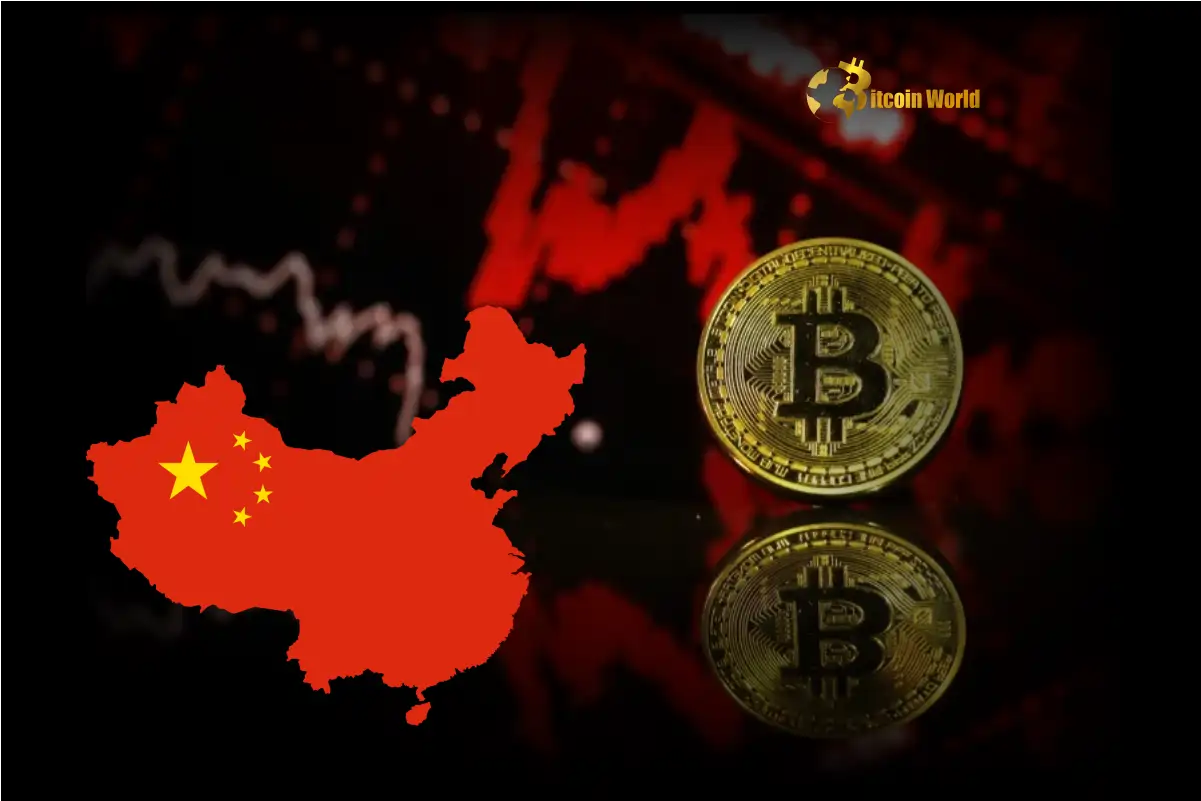China’s stringent ban on cryptocurrency trading isn’t stopping local governments from dealing with digital assets – specifically, the seized ones. Facing economic headwinds and revenue shortfalls, these local administrations are reportedly turning to private firms to liquidate confiscated cryptocurrencies. This workaround, while seemingly practical, is opening a Pandora’s Box of regulatory questions and fueling calls for a more standardized approach to crypto asset management in the nation. Let’s delve into this intriguing situation and explore what it means for the future of crypto in China and beyond.
Why Are Chinese Local Governments Liquidating Seized Crypto?
The backdrop to this crypto liquidation story is China’s current economic landscape. Several factors are at play:
- Economic Slowdown: China’s economy is experiencing a slowdown, impacting local government revenues. This creates pressure to find new sources of income.
- Crypto Crackdown: While crypto trading is illegal, crypto-related crimes haven’t disappeared. This leads to seizures of cryptocurrencies by law enforcement.
- Revenue Generation: Liquidating seized assets, including crypto, becomes a potential avenue to boost local government coffers amidst financial constraints.
Essentially, local governments are looking for ways to monetize assets they possess, and seized crypto liquidation offers a seemingly viable, albeit legally ambiguous, path.
The Regulatory Gray Area: Navigating China’s Crypto Ban
China’s blanket ban on crypto trading has created a complex regulatory environment. Here’s why the current liquidation method is raising eyebrows:
- No Formal Procedures: Currently, there are no standardized, nationwide procedures for handling and liquidating seized cryptocurrencies. This leaves room for inconsistent practices and potential mismanagement.
- Private Firm Involvement: Engaging private firms to handle liquidation adds another layer of complexity and raises transparency concerns. How are these firms selected? What oversight mechanisms are in place?
- Legal Ambiguity: The legality of these liquidations is not explicitly defined under existing regulations. Cryptocurrencies are not formally recognized as legal assets in China, further complicating matters.
This lack of clarity is prompting legal experts, judges, and law enforcement officials to advocate for formal recognition of cryptocurrencies as assets and the establishment of clear, standardized procedures for dealing with China crypto regulation regarding seized digital currencies.
Calls for Centralized Crypto Asset Management: A Strategic Crypto Reserve?
The decentralized nature of cryptocurrencies clashes with China’s centralized governance model. However, the increasing volume of seized crypto is forcing a rethink. Some experts are proposing a radical idea: centralizing the crypto asset management of seized tokens at the national level.
Potential Benefits of Centralized Management:
- Standardization and Transparency: A central authority could establish uniform procedures for seizure, storage, and liquidation, ensuring greater transparency and accountability.
- Reduced Local Discretion: Centralized management would minimize the risk of local governments acting inconsistently or potentially mismanaging seized assets.
- Strategic Reserve Potential: The most intriguing aspect is the possibility of China establishing a strategic crypto reserve. Instead of immediate liquidation, the central government could strategically manage these assets.
What could a strategic crypto reserve mean?
- Geopolitical Leverage: In a world increasingly influenced by digital assets, a national crypto reserve could provide China with geopolitical leverage.
- Financial Tool: The reserve could be used for various financial operations, although the specifics would be highly complex and require careful consideration given crypto’s volatility.
- Future Regulatory Flexibility: Holding a reserve might offer China more flexibility in shaping future crypto regulations and potentially engaging with the crypto space on its own terms.
Examples of Government Crypto Sales Globally
While China’s situation is unique due to its crypto ban, government crypto sales are not unprecedented globally. Several countries have auctioned off seized cryptocurrencies. Here are a few examples:
| Country | Method of Sale | Notable Examples |
|---|---|---|
| United States | Auctions (US Marshals Service, GSA) | Silk Road Bitcoin auctions |
| South Korea | Korea Asset Management Corporation (KAMCO) | Regular auctions of seized crypto |
| Australia | Public auctions and tenders | Sales of crypto seized from criminal activities |
These examples demonstrate that governments worldwide are grappling with the practicalities of managing and liquidating seized cryptocurrencies. However, the context and regulatory frameworks vary significantly from country to country.
Challenges and Considerations
While the idea of standardized procedures and a potential strategic reserve is gaining traction, several challenges and considerations remain:
- Volatility Risk: Cryptocurrency prices are notoriously volatile. Managing a large reserve and determining optimal liquidation strategies would be complex and risky.
- Security Concerns: Secure storage and management of vast crypto holdings would be paramount to prevent theft or loss.
- Regulatory Consistency: Even with centralized management, ensuring consistent enforcement and interpretation of crypto regulations across different regions of China will be crucial.
- Market Impact: Large-scale government crypto sales could potentially impact market prices, requiring careful planning and execution.
Actionable Insights: What Does This Mean for the Crypto World?
China’s approach to seized crypto, and the evolving debate around it, offers several key insights for the global crypto community:
- Regulatory Evolution is Inevitable: Even in countries with strict crypto bans, governments are forced to engage with digital assets in practical ways, highlighting the need for adaptable regulations.
- Asset Forfeiture and Crypto: The issue of seized crypto is not unique to China. Globally, law enforcement agencies and governments need clear guidelines for handling crypto assets obtained through illicit activities.
- Strategic Implications: The concept of a strategic crypto reserve, while nascent, suggests that nations are starting to consider the broader geopolitical and financial implications of digital currencies.
Conclusion: Navigating the Uncertain Crypto Landscape
China’s current approach to liquidating seized crypto through private firms is a fascinating case study in navigating the complexities of cryptocurrency regulation and economic realities. The situation underscores the urgent need for clearer, standardized procedures and a more comprehensive framework for dealing with digital assets within China’s legal system. Whether this leads to a centralized crypto asset management system or even a strategic reserve remains to be seen. However, one thing is clear: the way China handles its seized crypto will have significant implications, not just for its domestic policies, but for the global crypto landscape as well. The world is watching to see how this uncertain situation unfolds.
To learn more about the latest crypto regulation trends, explore our article on key developments shaping crypto policy globally.
[ad_2]
Source link






